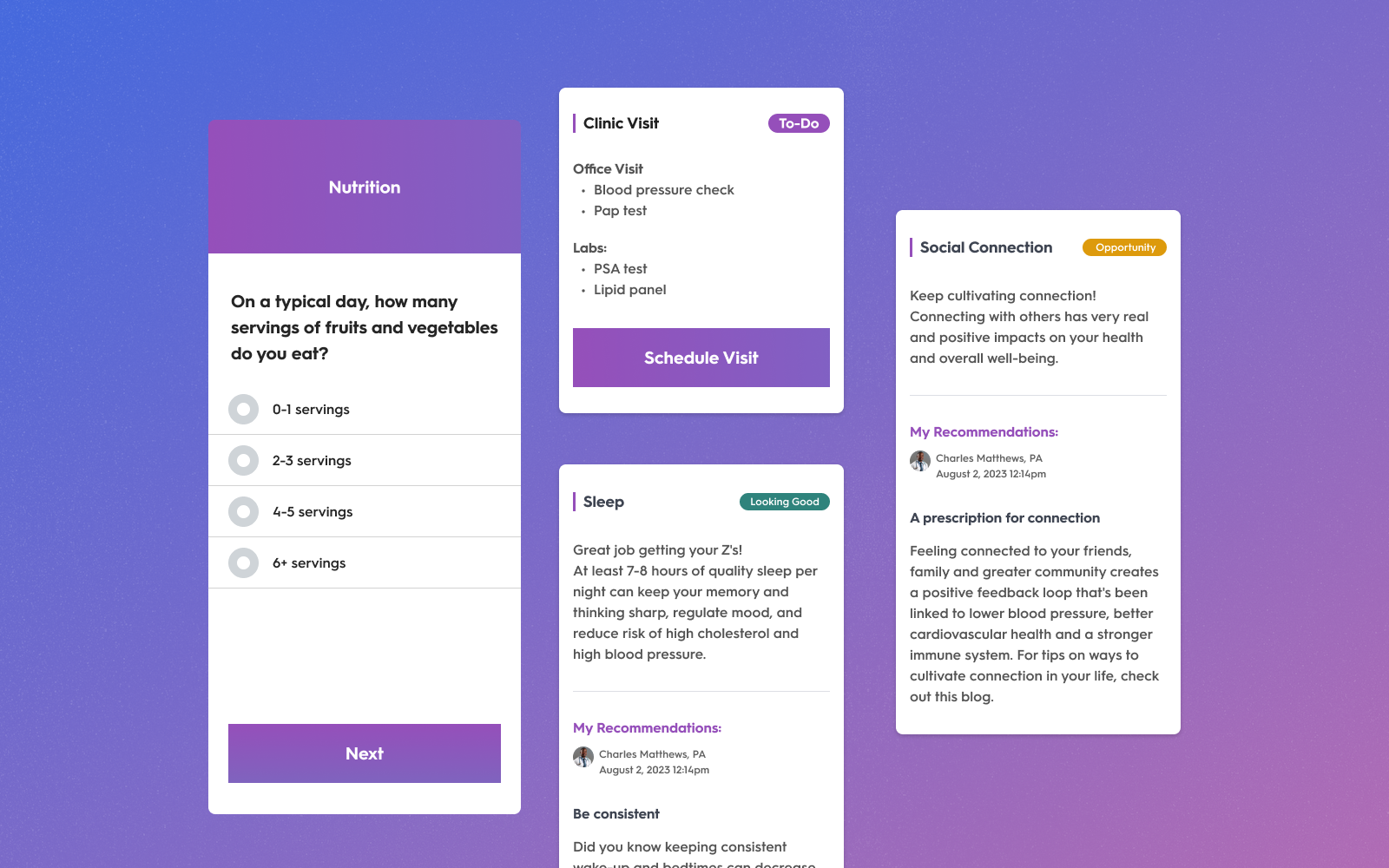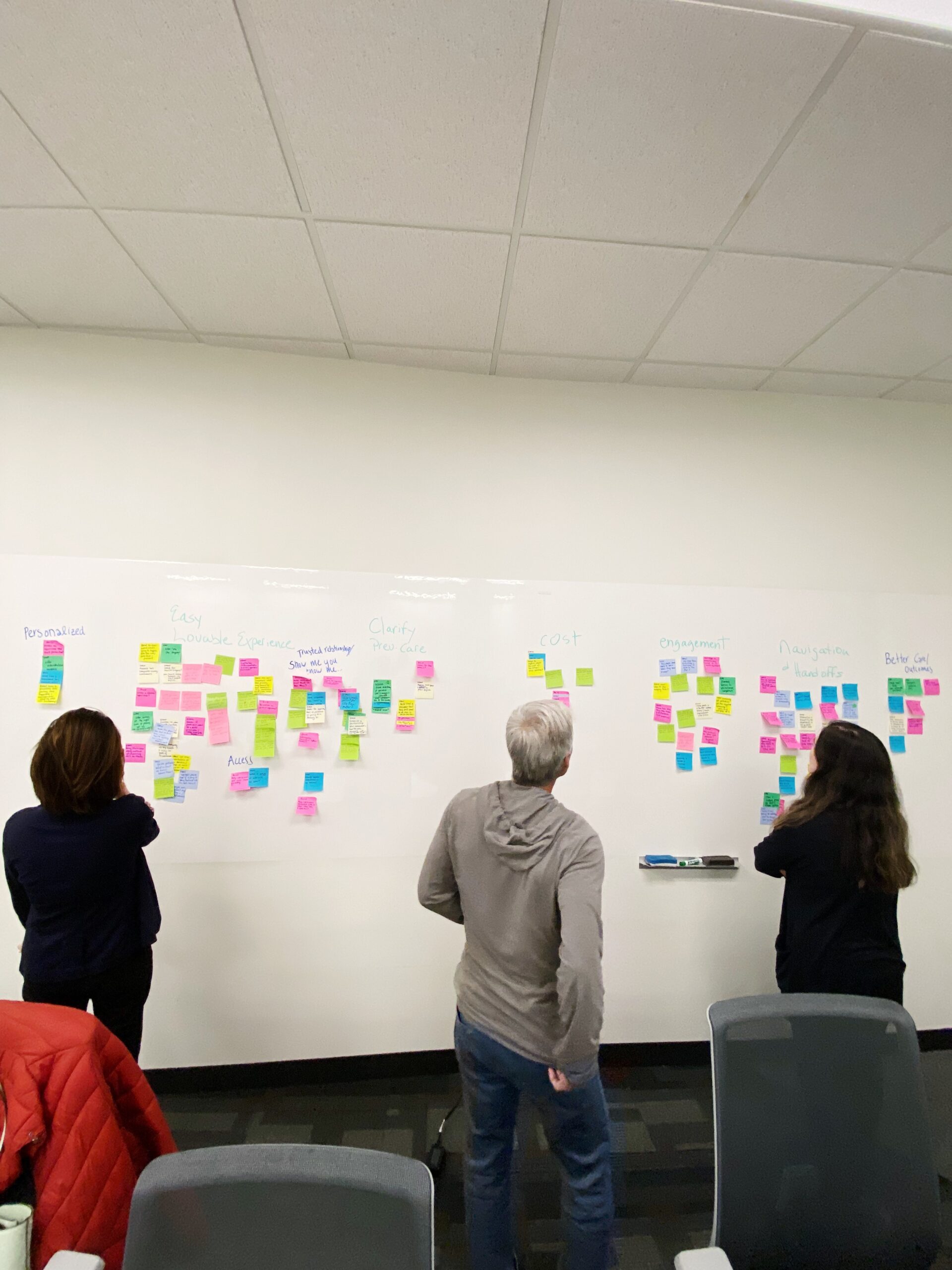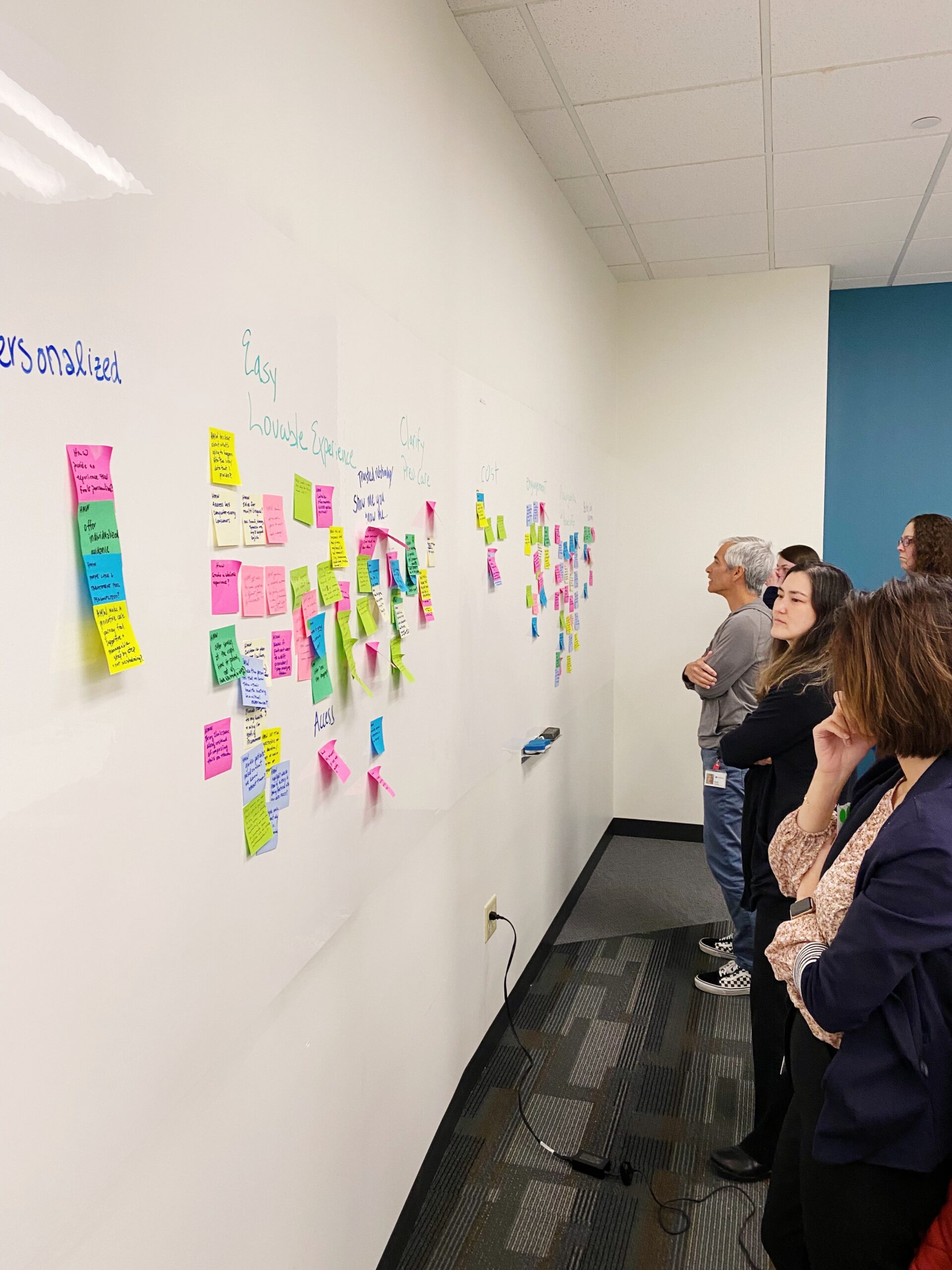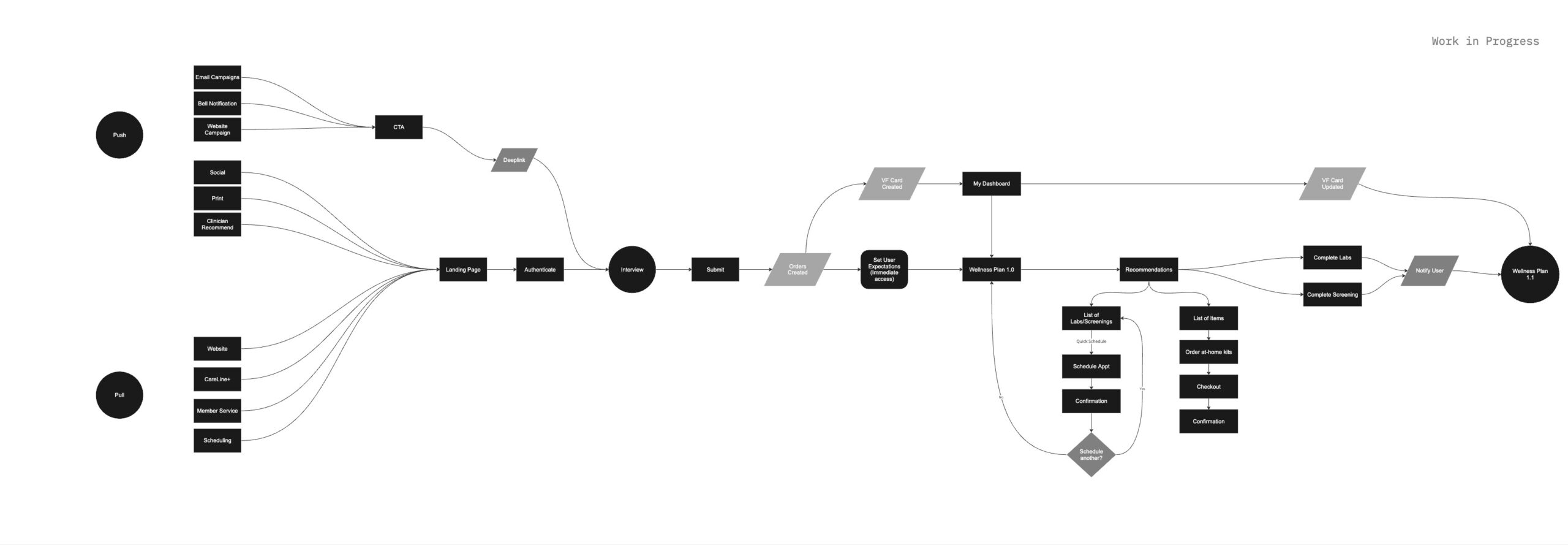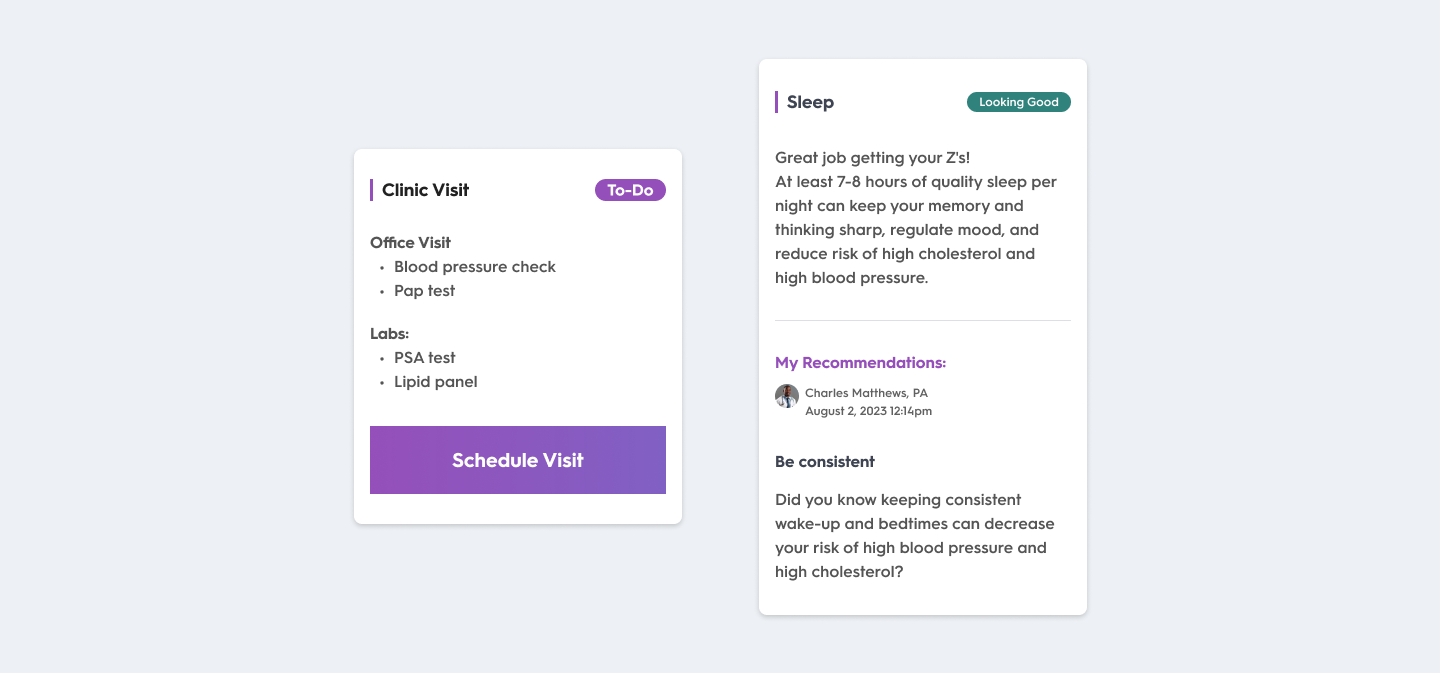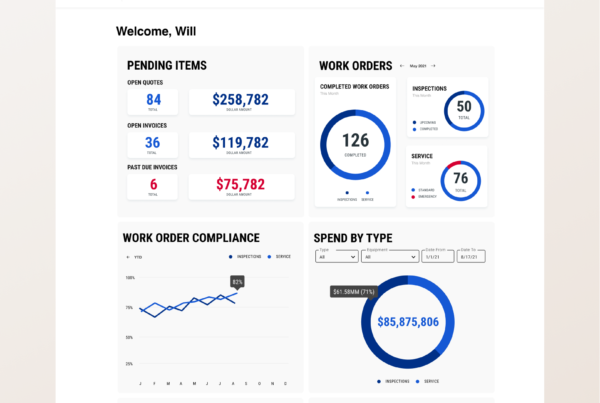Summary
Over the course of fifteen months I worked as a UX lead to define, develop, and launch a virtual preventive care experience for patients. The experience launched in January 2024.
Context
Background
Annual Exams are a loaded phrase. There is a lot of miseducation about the purpose and payoff of completing an annual exam, and there is significant opportunity to support today’s virtual landscape. What if an annual exam could be completed using your phone?
My role: Senior UX Designer
Timeline: 15 months
Process
Defining a net-new product
As the lead UX designer on this project, I worked with stakeholders and our research lead to carve out some definition of what this product could be. This included contributing to a design sprint to foster collaboration between departments, stakeholders, and designers to dream up a working prototype.
In order to get here I synthesized our research findings and worked with clinicians to understand their workflows, what guidelines were necessary to fulfill a preventive care exam, and what users were desiring in a preventive care experience.
My discovery focused on understanding current in-person preventive care exams, USPSTF guidelines, clinician workflows, and business needs. This was pivotal to provide a foundation for building a virtual version of this exam.
Feature Workshops
With a prototype, and early feedback, I led a series of feature workshops across our org to figure out feasibility, gaps, and potential complications for the type of product and experience we wanted to build. These workshops were a starting point for our org partners to have discussions and bring a level of clarity to our product definition.
This effort led to a collaboration between our clinical providers, technical partners, UX research, and key product stakeholders.
As a result of these workshops, cross-functional partners had a better understanding of our end-goal, and a basis to conduct their own discovery work.
Design & Testing
As I started to design new features for this experience, I partnered with our research lead to host user feedback sessions to gain an understanding of how users will interact with our product. The insights guided us to make design decisions with clarity.
To test users’ reaction to personalized data, we implemented a “Wizard of Oz” prototype. Users interacted with a realistic prototype, our design team updated the output on the fly, and users were able to interact with their data on the screen and give us valuable feedback.
Insight: users favor feedback that feels personalized. They want to feel like we took their whole health into account.
Iteration: How might we include more personalized touches in our recommendations so that patients feel seen?
Insight: Users felt the process was overwhelmingly easy to use, but were unsure of the value of the plan they received.
Iteration: How might we understand what users find valuable in the experience, and build upon that so that they feel satisfied and likely to recommend to others?
Solution
New Features
I worked with our online scheduling team to vet and test a new API that allowed our users to schedule multiple appointment types with the click of one button. While this sounds simple, it was quite complicated! Through this feature development we were able to take an office visit, and combine it with a labs visit to produce a seamless in-person experience for our users who needed follow-up care.
Wellness Plan
Working within an existing framework, I revised our acute wellness plan to offer our patients a visual indicator within a health pillar (ex Sleep). I also included a rules-based recommendation for users to highlight a doctor’s recommendation.
Successful Launch
This virtual care experience was launched successfully, initially with an MVP that was later revised for our public launch. The product was accepted by multiple insurance carriers as a viable preventive care experience, and has led the business to adopt additional hybrid care products in their portfolio.
With the product launched, our team is now focused on research and data analysis to further understand how users are using this service, what’s working, and what needs to be improved.
Learnings
- Workshops create a safe facilitation space for teams to voice concerns, hypothesize, and collaborate on solutions. I’ve always been a fan of workshops, and this experience unlocked a new appreciation for their effectiveness.
- Amplify the patients voice early and often. If our experience doesn’t create value for our patients, what needs to change?
Bonus: AI Concept Work
My org allows for two development days throughout the year where employees can chase down an idea they’re interested in, and work on a passion project.
My focus this year was to explore the idea of using AI (powered by CoPilot) to explain test results to users.
Insight:
67% of patients reported having confusion about different aspects of their laboratory results, including medical terminology, reference range, the meaning of laboratory value, and the effects on their health care.
Parameters:
- The system knows me and my health context
- It will explain what the lab is measuring, my lab value, and how it compares to patients with a similar health profile
- It will output the results at an 8th grade reading level (average reading level amongst Americans)
Takeaways:
- How might we use this as a complement to our high-level of care?
- Which tests would this method of understanding be appropriate for, or not?
- How might we use this approach as a jumpoff point to further empower our patients?

